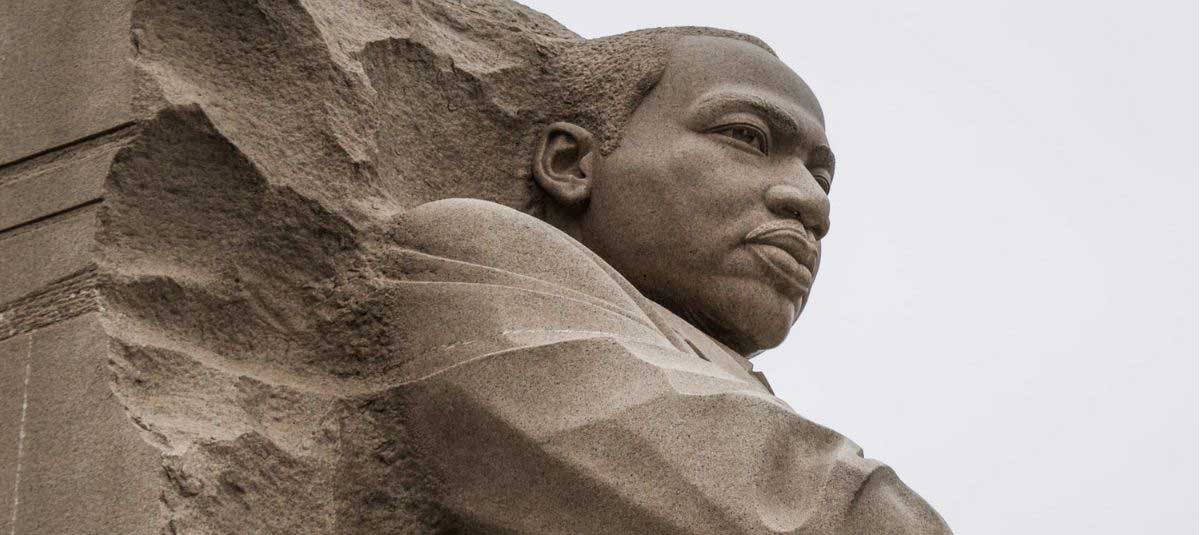4 Leadership Lessons From Martin Luther King Jr. and Other Greats

Every January, America pauses to honor one of its greatest leaders, Dr. Martin Luther King Jr. The activist and minister was a moral, spiritual, and political pioneer of the civil rights movement. From his leadership on the Montgomery bus boycott, to his Letter from Birmingham Jail, to his “I Have a Dream” speech—Dr. King’s words and actions inspire those struggling for social progress to this day.
Figures like Dr. King, who live on through their influence, have lessons for each and every one of us. While leaders come in all genders, races, sexualities, and religions, they often share similar tactics and strengths. Learn what powerful strategies unite great leaders like Dr. King, Shirley Chisholm, and Abraham Lincoln.
Whether you’re a nonprofit board member, a volunteer, or just someone who wants to improve the world in some small way, these leadership lessons will guide you toward greater impact.
Strengthen Your Leadership Skills at the Nonprofit Conference of the Year
1. Empower the Powerless
Outstanding leaders like Dr. King don’t take on the world all by themselves, they build movements. Although many of America’s greatest civil rights victories are associated with names like Dr. King and Rosa Parks, historic moments are rarely the actions of a single person. Comprehensive change often relies on the mobilization of large groups of people. The March on Washington (and the “I Have a Dream” speech) is remembered in part because more than 200,000 people came together to demand equality in civil rights and voting rights, along with action on education, employment, and housing.
In the book The Power of Habit, one of the topics Charles Duhigg explores is how leaders can influence others by creating new habits. Dr. King and his contemporaries turned peaceful resistance and support of their cause into an integral part of people’s lives, and consequently, gave them a sense of utility and ownership of the movement.
When King recast Montgomery’s struggle by giving protesters a new sense of self-identity, the protest became a movement fueled by people who were acting because they had taken ownership of a historic event. And that social pattern, over time, became automatic and expanded to other places and groups of students and protesters whom King never met.
One of Dr. King’s most important tasks in leading the civil rights movement was to convince the oppressed that they have the power to make change. When you want to bring people together and channel their energy toward change, you must impress upon them their own power, not just yours as a leader.
2. Find the Opportunity in Every Situation
Less than a year after Dr. King’s assassination, another great American leader made history. In 1969, Shirley Chisholm became the first black female member of Congress. She represented New York’s 12th congressional district, serving the urban Bedford-Stuyvesant neighborhood of Brooklyn.
So she was rightfully dismayed when her fellow legislators assigned her to the House Agriculture Committee. Neither her constituents nor her expertise were focused on agriculture, but as the story goes, a conversation with her neighbor, Rabbi Menachem Mendel Schneerson, inspired her to seize this hidden opportunity.
Chisholm worked with representatives from middle America, who served struggling farmers, to expand the food stamp program. This provided vital assistance for urban constituents like Chisholm’s, while also benefitting the country’s farmers. Furthermore, she drove the creation of the Women, Infants, & Children (WIC) program, which gives nutritious food to underprivileged women and children. Even though colleagues had tried to obstruct her influence, Chisholm found the opportunity in her imperfect situation.
Shirley Chisholm went on to serve seven terms in Congress and was the first black woman to run for United States president in 1972. She and other leaders have shown that some of the greatest victories come from seemingly bad situations. While disappointment and frustration are unavoidable in the struggle for social progress, setbacks can also reveal paths toward a better future. When faced with barriers, keep a sharp eye out for new opportunities to attack the core problems you are solving.
3. Enlist the Best Allies, Even if You’re Not Best Friends
A frequent pitfall for leaders is the failure to collaborate with peers and rivals. Leading an organization or a country can stir up issues of pride and competition. Some leaders fall into the trap of thinking that being in charge means they must do it all alone. But overcoming the urge to isolate and dominate is part of what elevates truly great leaders above the rest.
In Team of Rivals: The Political Genius of Abraham Lincoln, Doris Kearns Goodwin tells the story of how the 16th president’s success was aided by his ability to recruit and manage some of his biggest political rivals. After a hard-fought campaign, Lincoln beat out William H. Seward, Salmon P. Chase, and Edward Bates for the 1860 Republican presidential nomination. Rather than gloat or ignore these other politicians, however, Lincoln named them to his presidential cabinet, thereby gaining their expertise and skills.
Goodwin argues that having these former opponents by his side was instrumental to Lincoln’s success over Southern Secessionists in the Civil War. By uniting these uniquely talented people, Lincoln was able to lead the country more effectively.
All leaders must bear in mind that sometimes the smartest decision you can make is to bring on someone more knowledgeable than yourself. That may come in the form of investing in highly qualified staff, learning to work with someone with whom you butt heads, or giving someone on your team the authority to make decisions they are most qualified to handle.
4. Pursue the Impossible
You can’t improve your society or organization if you don’t believe something better is possible. It wasn’t that long ago that millions were enslaved in America and civil war was waged to maintain this injustice. In 1972, the idea of a black or female president seemed like a fantasy. And it was only 49 years ago that Dr. King was killed because he fought for equality in America.
Great leaders set out to achieve what others deem impossible. Dr. King, Shirley Chisholm, and President Lincoln each worked toward a better, more free and equal world, in part because they could imagine it. The struggle for racial, gender, and other forms of equality is not over, but to continue down this path, we must believe there is a destination.
Which other leaders have you learned from? Let us know in the comments below.

A Leader’s Guide to Motivating Employees



